System Restore in Windows 10, a lifesaver against failures
System Restore it is one of the most important maintenance tools in Windows. One of those internal applications that every user should handle to anticipate system failures which in the case of Windows 10 keep repeating themselves too often.
The idea behind this application System Restore it is simple, but powerful. Imagine using the “Undo” command when you are creating a document or editing an image and you want to go back. This application allows exactly that: to save a copy of the system when it works correctly in case of later errors to be able to revert the PC to the previous point.
Technically, it is a system protection tool that takes snapshots of the essential files group and Windows registry. These snapshots are saved as Restoration points, which are those that allow the user revert unwanted changes made in the main system files and configurations (drivers, registry keys or installed applications) which are the ones that generally cause conflicts and errors.
What is its usefulness and how does it work?
It should be clarified that the system restore application does not back up files nor does it restore documents, pictures, or other personal data, as it is not intended to replace backup tasks. Nor can it be used in a general way against malware (although it can work to avoid some viruses) and in the case of critical system failures, it will be necessary to go further using other tools to completely reinstall the system or reset the PC.
That said, this application is very useful in situations such as:
- After installing Windows updates that crash the computer.
- After installing drivers that destabilize the system.
- After installing incompatible applications that have a negative effect on the system.
- Before any change in the system registry.
- When we want to test applications or drivers of which we do not know how they work.
When using the tool it makes the following changes as a ‘time machine’:
- All system settings are restored to how they were when the restore point was created.
- All applications that have been installed since the restore point are uninstalled.
- All the drivers that were installed since the restore point was made are uninstalled.
- The same with all Windows updates that will be installed manually or automatically.
- All personal files stored in user folders (Documents, Pictures, Music, etc.) or on partitions other than the C: drive remain intact.
How to activate System Restore in Windows 10?
The operation and management of this feature is basically the same in the latest Windows, only that in Windows 7 and 8.1 it was activated by default and in Windows 10 we have to start it as follows:
– Access the System Protection tool located in the control panel. You can enter directly from the search box by typing “system restore” or “restore points”:
– There we can see if we have activated the system restore function. Taking into account the scope of action discussed above, we just have to activate the disk or disk partition «C» where we have the operating system installed:
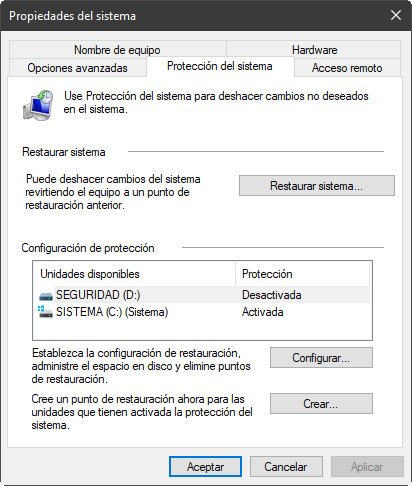
– Once the function is activated we can create restore points. Obviously, we must create them when the system works correctly and before making changes to hardware, installation of drivers or applications of which we doubt their operation.


– We can also configure the configuration, manage the disk space that we have dedicated and eliminate previous restore points that we are not going to use to save space.
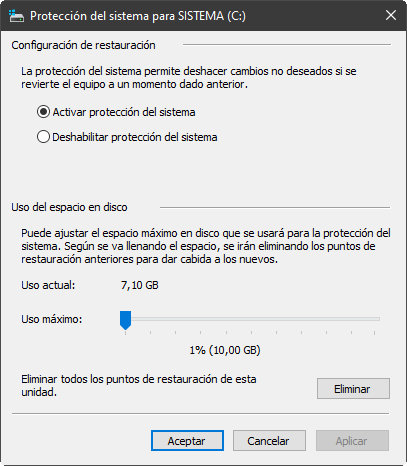
How to use System Restore in Windows 10?
Once the restore points are created, we can use them to undo those unwanted changes that have caused the errors in the system. From the same ‘System Properties’ screen we can restore the system to revert the computer to a previous point in case of problems.
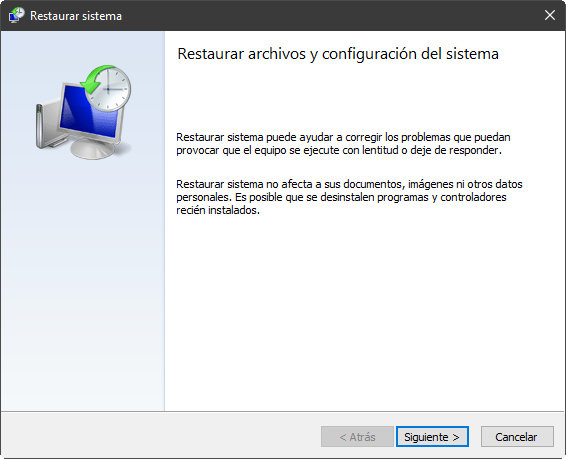
– Simply click on the ‘System Restore’ button and choose one of the points that we have created manually or an automatic point created by the same system. The tool also shows the programs affected by these changes.
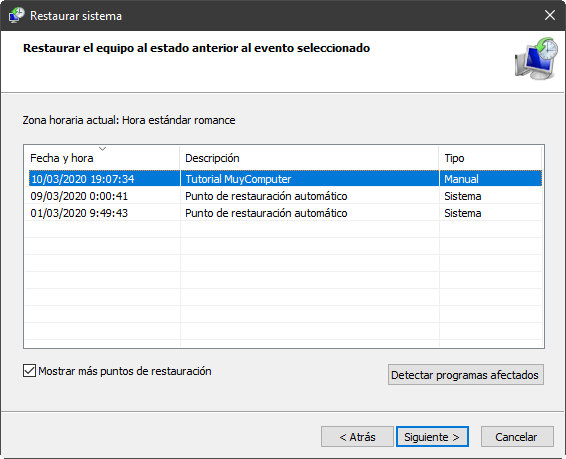
– This function will restore the files and main configuration of the operating system, settings, drivers, registry keys or programs installed at the time they were created and thus will revert the computer to a time of correct system operation.
What if I don’t have access to the operating system?
There are times when system failures are so serious that they prevent access to this System Restore in Windows 10 or even normal startup of it. On these occasions we can still run the restore points, but we will have to access them in another way, via:
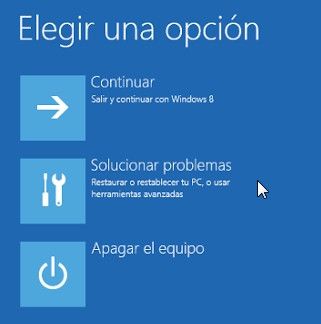
- Automatic repair mode if the system does not start for three consecutive times.
- System repair discs (CDs or DVDs).
- Boot from recovery USB.
- Windows 10 installation units.

Any of these methods will allow us to access the system when we cannot perform a standard boot and activate one of the restore points that we have saved without having to completely reset the PC or reinstall the operating system. Very useful against those failures in Windows 10 that recur inexorably from system updates or the installation of incompatible or not working applications or drivers.
Did you enjoy reading this article? If you did, help to spread this article by simple leaving a like or a share to any social media network of your choice. Thanks for stopping by we appreciate your visit.















